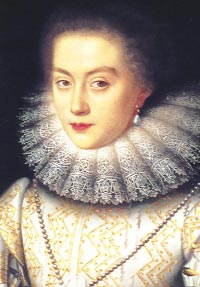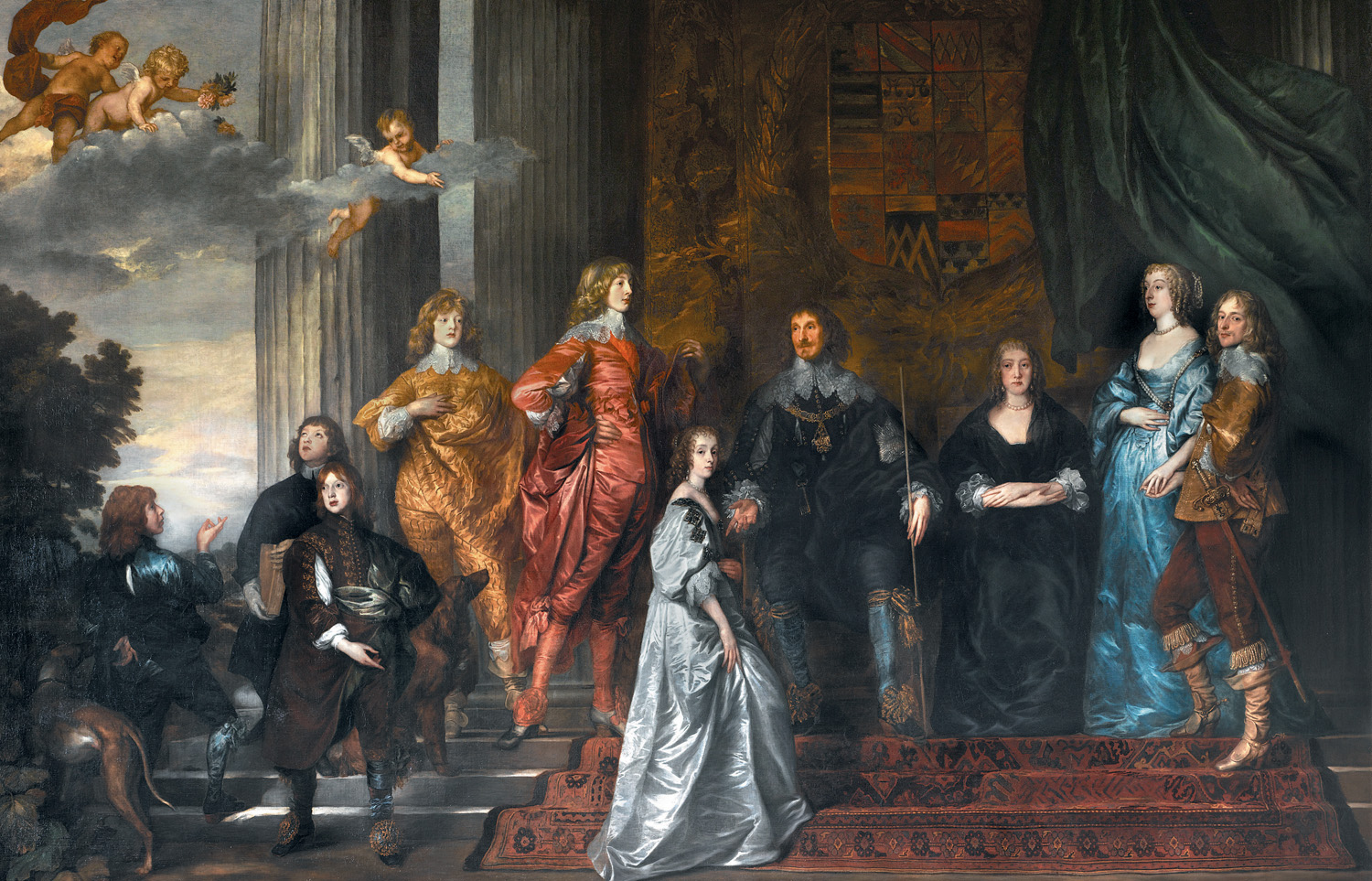
| The de Vere family were earls of Oxford from the 12th century (when Aubrey de Vere became the first earl in reward for his support of the Empress Matilda during the first English Civil War) to the beginning of the 18th century (when the 20th earl of Oxford died without a male heir). Members of the de Vere family are still alive today, most notably the Majendie, Beauclerk and Lindsay families, the latter who live in Castle Hedingham (the ancestral seat of the earls of Oxford). |
| The de Vere family is descended from Charlemagne the Great and at one time was theCounts of Coutances and Lewes in Normandy. Aubrey de Vere was William the Conqueror’s brother in law and led the right flank of the Norman army at the Battle of Hastings in 1066. From that point onwards, de Veres were at almost all of the major battles fought by English troops, over a period of 600 years: leading the vanguard at Lewis, Crecy, Poitiers, Agincourt, Barnet, Bosworth and Neuport, and founding the Blues Regiment (the Queen’s Household Cavalry) and the Buff’s Regiment. |

During the 15th century, the de Veres became the second wealthiest family in the country (after the Royal family), predominantly through the family’s connections with the wool trade, but also from ransom receipts following the battle of Agincourt.
Apart from their connections with Lavenham and Hedingham, the earls of Oxford lived in West Winch (near King’s Lynn), Castle Camps and at Wivenhoe Hall. They also owned houses in Chelmsford, Colchester and London (they were the last private owners of 10 Downing Street) and lands in Essex, Suffolk, Cambridgeshire, Huntingdon, Cornwall and Northamptonshire.
The de Vere family were patrons of Hedingham, Medmenham, Colne and Hatfield Priories, Stewards of Coggeshall and Woburn Abbey, Sheriffs of Essex and Hertfordshire, Stewards of the Royal Forests, Hereditary Great Chamberlains of England, and Lord High Admirals. The use of the chair and the whistle as de Vere devices, refer to their positions as Chamberlain and as Admiral of the fleet – indeed one of the possible origins for the name of pubs called the “pig and whistle” is a reference to the boar and whistle of the de Veres.
Stories associated with the de Vere family include the invention of the handkerchief (by the 9th earl of Oxford, who was also the first lord to hold the title of marquess). Also, the legend of Robin Hood may be a reference to Robert de Vere, a notorious outlaw who held Rockingham Castle, and who was a constant trial to his relative Robert the Good or Robert the Saint, the 6th earl of Oxford.

Edward de Vere, 17th earl of Oxford, is considered by some to have been the real author of William Shakespeare’s plays. Certainly it is the case that many of Shakespeare’s plots refer to events in the history of the de Veres, including the character of Falstaff (Lord Fastolf of Caister was a friend of the family and in the company of the 11th earl of Oxford at the battle of Agincourt). The first performance of a Midsummer Night’s Dream was at the wedding of a de Vere in 1596

From 1595 to 1632, the de Vere family became involved in the Wars of Dutch Independence in Europe: the 18th earl died at the siege of Breda (1625), his uncle at Wesel (1595), two of his cousins died with the 18th earl at Breda (1625), his cousin Edward died at the siege of Bois le Duc (1629), his cousin John died in battle in 1631 and the 19th earl died at the siege of Maastricht (1632).

Aubrey de Vere, the 20th earl of Oxford, played an important part in the Restoration of Charles II, and then chaired the meeting of William of Orange and James II in 1688 (the “Bloodless Revolution” which saw William appointed heir to the throne). He is believed to have drafted the Bill of Rights on a napkin in a Hertfordshire pub during a meeting of James II and William III. He died in 1703 in 10 Downing Street with no sons and only one surviving daughter, Diana de Vere, who married the 1st Duke of St Albans.


Originals hanging in the National Portrait Gallery at Montacute House
De Vere House has over 40 portraits of the de Vere family, many hanging by permission of the National Portrait Gallery or the National Trust but as many are original artwork where the only copy is held in the De Vere House collection. These include portraits, miniatures, sketches, seals, brass rubbings, a wall hanging and oil paintings of:
Aubrey de Vere 2nd Earl of Oxford, Robert de Vere 3rd Earl of Oxford, Hugh de Vere 4th Earl of Oxford, Robert de Vere 5th Earl of Oxford, John de Vere the Good, Sheriff of Nottingham, John de Vere 7th Earl of Oxford, Thomas de Vere 8th Earl of Oxford, Robert 9th Earl of Oxford and 1st Marquess of Dublin, Aubrey de Vere 10th Earl of Oxford (frieze on tiles), Richard de Vere 11th Earl of Oxford, Elizabeth Scrope de Vere Countess of Oxford (portrait and brass rubbing), John de Vere 15th Earl of Oxford, Edward de Vere 17th Earl of Oxford (portrait and miniature), Henry de Vere 18th Earl of Oxford, Anne Cecil 17th Countess of Oxford, Diane Kirke Countess of Oxford, Susan de Vere 4th Countess of Pembroke (and family), Anne de Vere Clifford Countess of Pembroke, Frances de Vere Countess of Essex (miniature), Francis de Vere Countess of Surrey, Sir Francis de Vere (facsimile and portrait), Horace de Vere 1st Baron Tilbury, Anne de Vere Lady Fairfax, Elizabeth Trentham de Vere Countess of Oxford, Diana Cecil de Vere, Countess of Oxford, Robert de Vere 19th Earl of Oxford (sketch and portrait), Anne de Vere Capell Baroness Carlisle, Aubrey de Vere 20th Earl of Oxford and Diana Kirke de Vere, 20th Countess of Oxford.









